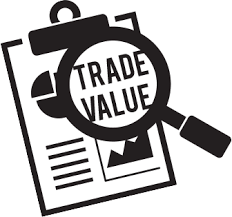There are many factors that can effect a car loan. Some of these factors may seem obvious, but there are several others that the average consumer may not be aware of. Some of these include your personal risk factors, the length of the loan (referred to as the term), amount financed, vehicle risk factors, and loan to value. Each one of these factors can have a significant impact on your monthly payment. I will be posting seperate blog posts for different pieces of this to keep each post from getting dragged out too much. For this post I will start by explaining credit.
Obviously your own personal credit is the number one factor in determining whether you will get financed, how much you will get approved for, what rate you will recieve, etc. Even this can get complicated though. It is a no-brainer that the better credit you have, the better your rate will likely be. The interest rate that you are charged is dependent on how much risk the bank would be taking in loaning to you. It is like playing the stock market. The more volatile the stock, the higher the return can be or, conversely, the more you can lose.
The same goes with the bank loaning you a vehicle. The bank is taking a chance on whether or not you will repay the debt and how consitent you will be in doing so. A bank is trying to determine whether or not you will pay your loan back monthly at a specified amount. This is not just about whether or not you will pay, but also how much effort they might have to exert to get you to pay, for example phone calls and letters. The bank will look at several factors. Initially, they will look at your credit report and determine whether you have paid other loans monthly at a specified amount.
Often, people will get a small loan to start building their credit or get a credit card. While these loans will definitely help, it will not be as much as buying a car or buying a house. Your ability to pay matters, too. When looking at a loan, the banks and credit agencies will calculate your ability to pay compared to other people. Essentially the bank is asking, “How many people can afford to pay this $75 a month loan?” Obviously a higher percentage can afford this payment than a $400 a month payment.
Banks will also be determining how much free cash flow you have a month. Although you may have an 850 score, you might only make $10 more than what your credit report shows you owe a month. This an exaggeration, because you will not have a perfect credit score if your debt to income (how much you owe compared to how much you earn) is too high. A credit report will estimate your debt to income without knowing your income, and it will effect your score, but it will not tell the whole story.
The timing of your accrual of debt also matters. If you have not borrowed money very often, but you buy a house and a car back-to-back your credit will likely take a large, albeit temporary, hit. The credit companies will want to make sure that you have not lost your mind and decided to go on a massive spending spree (If you do decide to do that, just remember that I love you). That is one reason not to buy a vehicle right before, or in the process of, buying a house. The bank will want to see that you can afford a car itself before they will risk money on whether or not you can afford a car and a house at the same time.
Another fact concerns whether you are a nomad or not. Do you move from town to town? Are you a job hopper? Is this your first real job? If you cannot stay in one place or you are unable to hold down a steady job a bank might worry about your ability to pay for the periods that you are unemployed. If you are just getting your first big kid job they will likely be wary about letting you pay them $600 a month when you just started making $600 a month. You “millenials” scare the ever living crap out of banks (and me, too, sometimes).
There are many, many, many other factors that effect your score and your chances of getting a loan, but I am nearing unconsciousn…… ess from boredom just typing this. Off to more exciting stuff…









